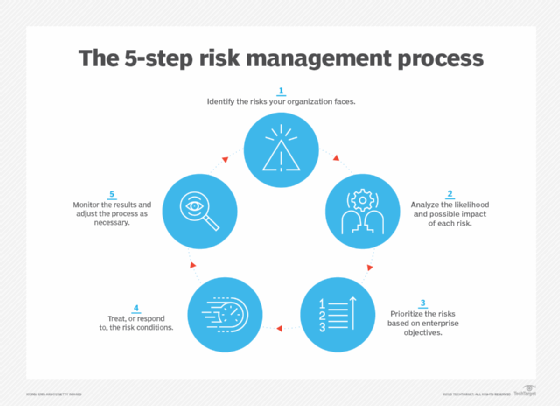The Effect of the Importance of Risk Management on Organizational Governance
The Effect of the Importance of Risk Management on Organizational Governance
Blog Article
The Significance of Recognizing the Relevance of Risk Management in Various Industries

The Core Concept of Risk Management and Its Purpose
Risk Management, the cornerstone of many sectors, rests on the recognition, analysis, and mitigation of uncertainties in a company environment. It is an essential technique that permits companies to guard their assets, track record, and overall survival. By properly determining potential threats, companies can establish methods to either protect against these dangers from taking place or decrease their impact. The assessment procedure involves assessing the chance and possible severity of these threats. The mitigation procedure includes developing techniques to lower their possible impact as soon as dangers have actually been determined and examined. This procedure is intermittent and continuous, making sure that organizations are prepared for the ever-changing nature of Risk in various industries. The primary objective, thus, is to cultivate durability among unpredictabilities.
Benefits of Applying Risk Management in Company Operations

Unveiling the Duty of Risk Management in Different Industries
While every industry challenges its special set of threats, the implementation of Risk Management techniques continues to be a common in their search of sustainability and growth. In the medical care market, Risk Management entails making sure individual security and data security, while in finance, it involves mitigating investment risks and ensuring governing compliance. Eventually, the duty of Risk Management throughout markets is to recognize, assess, and reduce dangers.
Real-life Study Demonstrating Effective Risk Management
To understand the relevance of Risk Management in these several fields, one can look go to these guys to a number of real-life instances that illustrate the effective application of these actions. Toyota, post the 2011 quake in Japan, changed its supply chain Management to decrease interruption threats. These cases show how markets, learning from dilemmas, effectively applied Risk Management approaches to decrease future threats.
Future Patterns and Growths in Risk Management Strategies
As the globe proceeds to develop, so too do the trends and advancements in Risk Management approaches. Quick developments in technology and data analytics are reshaping the Risk landscape. Huge information and AI are currently instrumental in predicting and minimizing risks. Organizations are leveraging these tools to build predictive designs and make data-driven decisions. Cybersecurity, as soon as a peripheral concern, has catapulted to the leading edge of Risk Management, with methods concentrating on feedback, avoidance, and detection. The assimilation of ESG (Environmental, Social, Governance) factors right into Risk Management is one more expanding pattern, mirroring the enhancing acknowledgment of the function that social and ecological threats play in company sustainability. Therefore, the future of Risk Management exists in the blend of innovative technology, innovative techniques, and an alternative technique.
Final thought
To conclude, understanding the significance of Risk Management throughout a range of industries is vital for their long life and prosperity. Tailored techniques can help click for more mitigate possible dangers, guard assets, and foster stakeholder trust. Furthermore, aggressive decision-making aids in governing conformity and optimizes source usage. Ultimately, effective Risk Management contributes to more durable and lasting organizations, highlighting the value of this technique in today's extremely affordable and dynamic service atmosphere.
While every market faces its distinct set of find more info risks, the application of Risk Management strategies remains an usual denominator in their pursuit of sustainability and development. In the healthcare industry, Risk Management requires ensuring patient security and data defense, while in finance, it involves mitigating investment risks and guaranteeing regulative compliance. Inevitably, the function of Risk Management across sectors is to determine, analyze, and minimize risks. These instances show exactly how industries, learning from crises, effectively used Risk Management methods to minimize future dangers.

Report this page